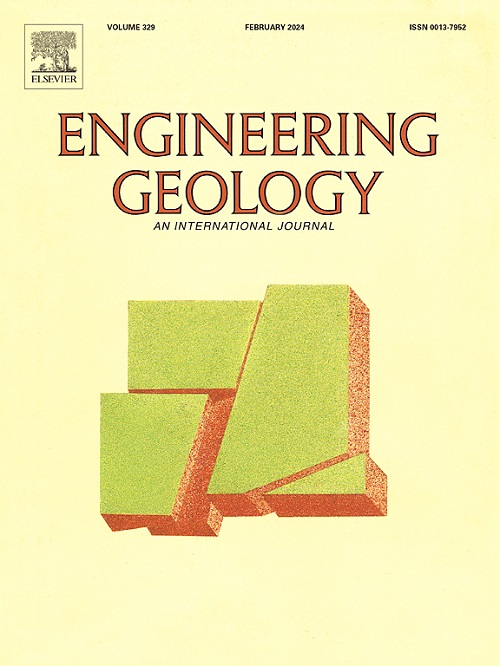Deep learning-based inversion framework for fractured media characterization by assimilating hydraulic tomography and thermal tracer tomography data: Numerical and field study
IF 6.9
1区 工程技术
Q1 ENGINEERING, GEOLOGICAL
引用次数: 0
Abstract
Accurate characterization of fractured media is fundamental in the geological and geotechnical engineering applications such as coal mine production, deep geological disposal and enhanced geothermal systems (EGS). However, traditional inversion strategies are limited in their ability to characterize high-dimensional and non-Gaussian fractured media. Furthermore, a significant amount of observation well was employed during the inversion process in the previous studies. In this work, we proposed a joint inversion framework based on deep learning technique to overcome the limitations of the traditional strategies and the challenge of excessive use of observation wells. The convolutional variational autoencoder (CVAE) network was trained to parameterize the fractured media. After that, the ensemble smoother with multiple data assimilation (ESMDA) combined with the CVAE to characterize fractured media assimilating the hydraulic tomography (HT) and thermal tracer tomography (TT) data. A numerical study using four observation points validates the framework's reliability. The characterization errors for single-data cases are 16.9 % (HT) and 18.1 % (TT), decreasing to 16.7 % when both types of data are incorporated, demonstrating the synergies of multisource data. Sequentially, the framework is extended to the real-world scenario. The results show that our framework can effectively characterize the fractured media, capturing more features while addressing the challenge posed by excessive use of observation wells through the integration of multisource data. Our framework provides valuable insights into the characterization of fractured media in the practical engineering applications and highlights the benefits of multisource data assimilation.
利用水力层析成像和热示踪层析成像数据进行裂缝介质表征的基于深度学习的反演框架:数值和现场研究
裂缝介质的准确表征是地质和岩土工程应用的基础,如煤矿生产、深部地质处置和增强型地热系统(EGS)。然而,传统的反演策略在表征高维和非高斯裂缝介质的能力方面受到限制。此外,以往的研究在反演过程中使用了大量的观测井。在这项工作中,我们提出了一个基于深度学习技术的联合反演框架,以克服传统策略的局限性和过度使用观测井的挑战。利用卷积变分自编码器(CVAE)网络对裂缝介质进行参数化训练。之后,采用多重数据同化(ESMDA)和CVAE相结合的集成平滑方法对压裂介质同化水力层析成像(HT)和热示踪层析成像(TT)数据进行了表征。采用四个观测点的数值研究验证了该框架的可靠性。单数据情况下的表征误差为16.9% (HT)和18.1% (TT),当两种类型的数据合并时,表征误差降至16.7%,显示了多源数据的协同效应。然后,将框架扩展到实际场景。结果表明,我们的框架可以有效地表征裂缝介质,捕获更多特征,同时通过集成多源数据解决过多使用观测井带来的挑战。我们的框架为压裂介质在实际工程应用中的表征提供了有价值的见解,并强调了多源数据同化的好处。
本文章由计算机程序翻译,如有差异,请以英文原文为准。
求助全文
约1分钟内获得全文
求助全文
来源期刊

Engineering Geology
地学-地球科学综合
CiteScore
13.70
自引率
12.20%
发文量
327
审稿时长
5.6 months
期刊介绍:
Engineering Geology, an international interdisciplinary journal, serves as a bridge between earth sciences and engineering, focusing on geological and geotechnical engineering. It welcomes studies with relevance to engineering, environmental concerns, and safety, catering to engineering geologists with backgrounds in geology or civil/mining engineering. Topics include applied geomorphology, structural geology, geophysics, geochemistry, environmental geology, hydrogeology, land use planning, natural hazards, remote sensing, soil and rock mechanics, and applied geotechnical engineering. The journal provides a platform for research at the intersection of geology and engineering disciplines.
 求助内容:
求助内容: 应助结果提醒方式:
应助结果提醒方式:


